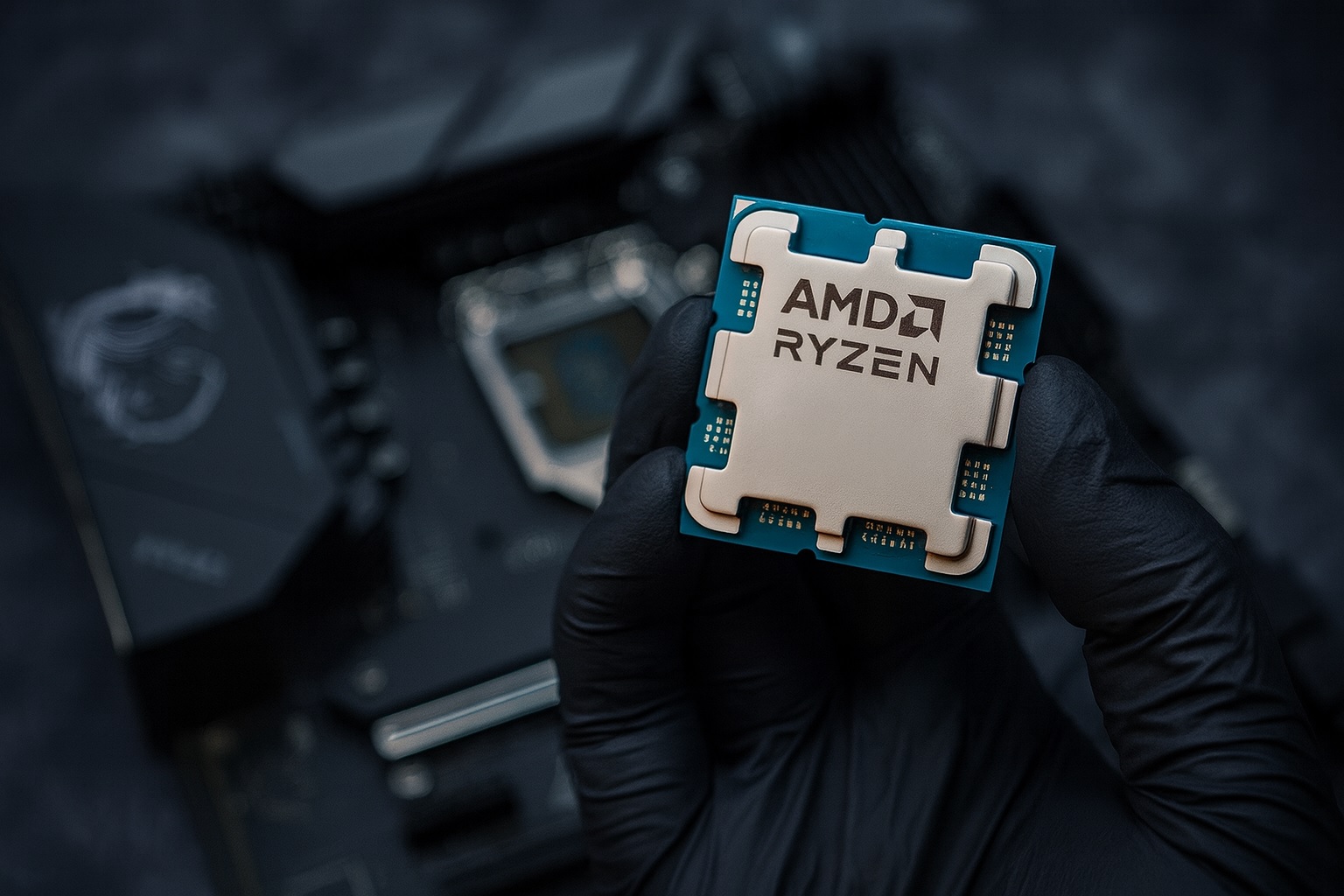- AI Partnerships Drive AMD Rally: AMD recently inked blockbuster AI deals – a multi-year pact to supply OpenAI with GPUs powering 6 gigawatts of compute, and an Oracle Cloud agreement to deploy 50,000 of AMD’s next-generation Instinct GPUs [1] [2]. These contracts are projected to generate “tens of billions” in annual revenue and over $100 billion cumulatively in new sales [3] [4]. The news sparked a massive market reaction: on Oct. 6 AMD shares surged 34% in one day (the biggest gain since 2016) [5], adding roughly $80 billion to its market value.
- Record Stock Performance: AMD stock has climbed roughly 80–95% year-to-date (as of late Oct. 2025), far outpacing peers [6] [7]. It briefly hit all-time highs in mid-October (around $238 per share [8]) before settling near ~$235 by Oct. 23 [9] [10]. For comparison, Intel shares trade near $38 (up ~85% YTD) [11] and NVIDIA (still dominant in AI GPUs) around $180. AMD’s ~$380 billion market cap now rivals Intel’s and sits behind only Nvidia (now a ~$4T company) [12]. Market observers note this rally is “extraordinary” – the Philadelphia Semiconductor Index is up only ~32% in 2025, so AMD’s gain stands out among chipmakers [13] [14].
- Bullish Analyst Sentiment: Wall Street has grown very optimistic. Major firms have raised price targets into the mid-$200s to $300 range [15]. For example, Bank of America’s Vivek Arya hiked his 12-month target to $300 [16], Jefferies and Wolfe Research each raised targets to $300, and HSBC’s is $310 [17]. Overall about 60–65% of analysts rate AMD a “Buy,” compared to ~50% earlier in the year [18] [19]. Morgan Stanley recently bumped its 2027 revenue forecast to $51.2 billion (from $44.2B) on an improving datacenter outlook [20]. Even traditionally cautious houses (Goldman, Citigroup) have turned neutral-on-AMD after the AI agreements, while more bullish ones (Wedbush, Stifel) boosted targets – Wedbush raised its price target to $270 citing the AI deal thesis [21].
- Strong Financial Results & Guidance: AMD’s latest earnings exceeded expectations. Q2 2025 revenue was $7.69 billion (up +32% YoY) and adjusted EPS $0.48 [22]. CEO Lisa Su noted product rollouts have contributed to the gain. The company guided Q3 2025 revenue to about $8.7 billion (up ~20% YoY) [23], with full-year 2025 sales now targeted near $33 billion [24]. CFO Jean Hu said the OpenAI agreement “should deliver tens of billions of dollars in revenue” and be “highly accretive” to future earnings [25]. Despite strong demand, growth is partly limited by U.S. export curbs: AMD expects a ~$1.5 billion hit to 2025 sales from restrictions on AI chip shipments to China [26].
- Intel and NVIDIA Context: AMD’s rise comes against fierce competition. Nvidia remains the undisputed AI leader, commanding roughly 90–94% of the data-center GPU market [27]. In Nvidia’s last quarter, its data-center revenue jumped 73% to $39.1 billion [28], dwarfing AMD’s $3.2B (14% growth) for the same period. Nvidia’s CEO Jensen Huang has reacted to the AMD-OpenAI deal as “imaginative” and “surprising,” quipping that giving up 10% of AMD (through the OpenAI warrant) was “clever, I guess” [29]. Huang nonetheless praised AMD as “a really good company” that Nvidia takes “very seriously” [30], implying Nvidia will closely watch AMD’s execution. Intel is also ramping up AI: in mid-October it unveiled a new “Crescent Island” data-center AI chip for 2026 [31] [32] and secured major funding (the U.S. government’s CHIPS stake plus $7B from Nvidia/SoftBank) to boost its data-center focus [33]. In this context, AMD is pitching its GPUs, EPYC CPUs and new Helios AI server racks as an “open” alternative to Nvidia’s proprietary systems [34] [35].
- Valuation & Risks: AMD’s rally has stretched valuations. TS2.Tech notes AMD now trades around 40× expected 2026 earnings (its trailing P/E exceeds 100×) [36] – rich even against Nvidia (~30×) [37]. Simply Wall St analysts flag that much of the growth is already baked in: they warn of “downside risk if growth projections prove too bullish or competition and regulatory challenges weigh on performance” [38]. In other words, at current price levels AMD’s multiples leave “little room for error” if orders disappoint or new products underperform [39] [40]. A few firms (Goldman Sachs, Citi) maintain neutral ratings with 12-mo targets near $210 [41] [42], citing high expectations. The stock’s elevated valuation means any broader tech selloff or stumble in AI demand could trigger profit-taking.
- Outlook & Forecasts: Looking ahead, analysts paint both bullish and cautious scenarios. In the short term, AMD’s momentum may test up against market volatility – it must sustain high growth (and meet Nov. 4 Q3 results) to justify today’s levels [43] [44]. Bank of America, for example, forecasts AMD on a “conservative path to $10+” annual EPS by 2027 based on these AI ramps [45] – which would imply a three- to four-fold share-price gain. Wedbush’s thesis is that each gigawatt of AI capacity could mean roughly $20 billion in AMD sales [46]. If AMD can achieve production of the MI450/MI400X GPUs and ramp deals with hyperscalers (OpenAI, Oracle, Meta, etc.), many analysts believe its long-term growth will be substantial. Short-term, targets range mostly in the $240–$300 area [47] [48]. However, bears point out that if AMD fails to significantly dent NVIDIA’s AI dominance or if macro/regulatory headwinds emerge, the stock could retreat toward the $180–$210 range cited by some fair-value models [49] [50].
In summary, AMD’s recent AI-driven surge has been fueled by heavyweight partnerships and robust demand, earning plaudits from executives and analysts alike. But the stock now sits at lofty valuations. Investors will be watching closely whether AMD can translate its new AI wins into sustained growth – success could justify prices well above today’s $235, while any misstep might curb the rally. As one analyst quipped, AMD is striving to be the “open, secure, and scalable” AI platform versus Nvidia’s closed box [51]. Whether Wall Street’s bullish forecasts come true will depend on that bet paying off in the years ahead.
Sources: News and analyses from Reuters [52] [53], TS2.Tech [54] [55], CNBC/Benzinga [56], Fox Business [57], Investing.com [58], and Simply Wall St [59]. All data as of Oct. 24, 2025.
References
1. www.reuters.com, 2. www.reuters.com, 3. www.reuters.com, 4. ts2.tech, 5. www.reuters.com, 6. ts2.tech, 7. www.benzinga.com, 8. ts2.tech, 9. ts2.tech, 10. ts2.tech, 11. ts2.tech, 12. ts2.tech, 13. ts2.tech, 14. ts2.tech, 15. ts2.tech, 16. ts2.tech, 17. ts2.tech, 18. ts2.tech, 19. ts2.tech, 20. www.investing.com, 21. ts2.tech, 22. www.reuters.com, 23. ts2.tech, 24. ts2.tech, 25. ts2.tech, 26. www.reuters.com, 27. ts2.tech, 28. www.reuters.com, 29. www.benzinga.com, 30. www.benzinga.com, 31. ts2.tech, 32. ts2.tech, 33. ts2.tech, 34. ts2.tech, 35. www.reuters.com, 36. ts2.tech, 37. ts2.tech, 38. simplywall.st, 39. ts2.tech, 40. simplywall.st, 41. ts2.tech, 42. ts2.tech, 43. ts2.tech, 44. ts2.tech, 45. ts2.tech, 46. ts2.tech, 47. ts2.tech, 48. ts2.tech, 49. simplywall.st, 50. ts2.tech, 51. ts2.tech, 52. www.reuters.com, 53. www.reuters.com, 54. ts2.tech, 55. ts2.tech, 56. www.benzinga.com, 57. www.foxbusiness.com, 58. www.investing.com, 59. simplywall.st









